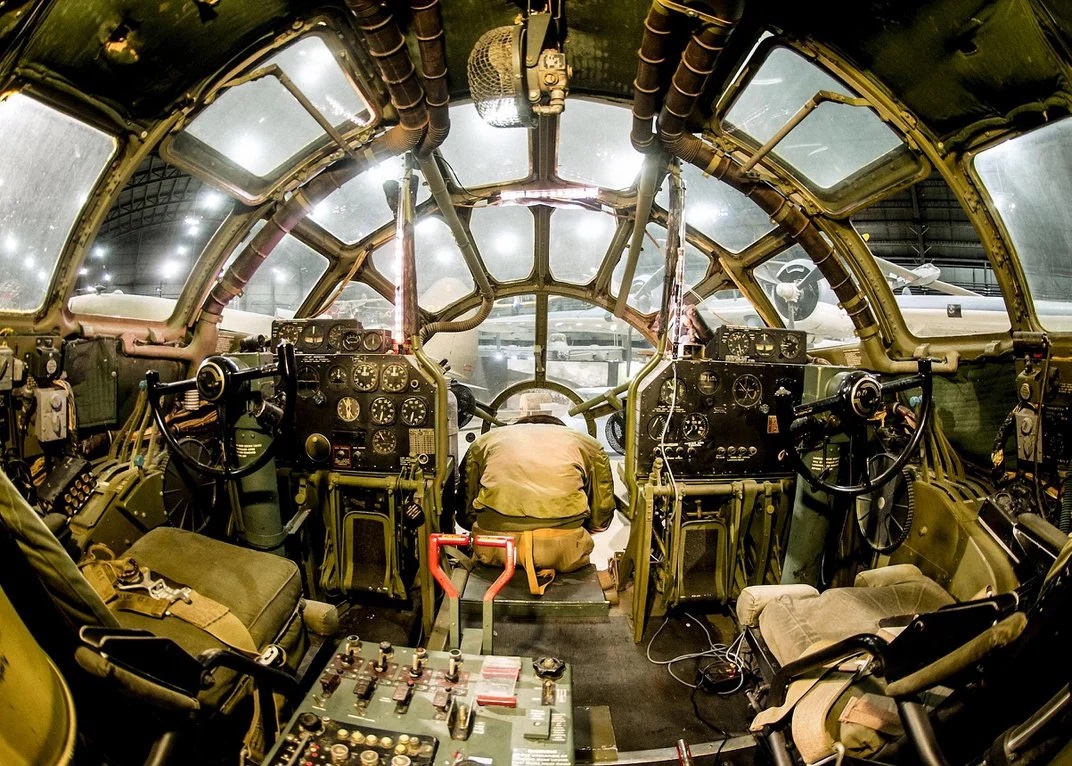On May 3, 1945, I was the radio operator on a Boeing B-29 Superfortress of the 43rd Bomb Squadron, 29th Bomb Group, flying out of Guam. It was my 15th mission, and we were on our way to bomb Japan.
At that time, the U.S. Navy had hundreds of ships deployed off the coast of Okinawa that were being attacked by kamikaze planes flying from Kyushu, Japan’s southernmost island. Our mission was to strike Tachiarai Airbase on Kyushu.
Had I been more superstitious, I would have had an eerie feeling the moment I awoke. Instead of our usual aircraft that day, we crewed a borrowed Superfortress.
It was a long flight to the target, so after an early morning briefing, we were quickly in the air, flying singly for a distance of some 1,400 or 1,500 miles. When we reached our rendezvous point off the coast of Japan, each plane began flying a “two minute square” until the entire squadron had assembled. My Superfort had just arrived when several enemy Kawasaki Ki.61 “Tony” fighters attacked us.
Our pilot, 2nd Lt. Orba Malone, alerted our bombardier, 2nd Lt. Al Sutherland. “Al,” he said, “there’s one coming in at 12 o’clock.” Sutherland, who controlled the forward .50-caliber guns replied, “I don’t see him.” Malone shot back, “Well, you’d better, he’s barreling right in on us!”
Before Sutherland could get him in his sights, the Japanese pilot fired several 20mm tracer shells at us. Aircraft commander 1st Lt. Harry Hayes pushed the yoke forward and sent our plane into a steep dive, avoiding the incoming fighter by just a few yards. If he hadn’t done that, we probably would have collided head-on with that Tony.
So overcome by our good fortune at missing the plane, we did not realize that four of the Tony’s 20mm shells had struck our Superfort. We had taken a hit in the No. 3 engine and it was now winding up at ever-increasing rpms. If it continued unchecked, we would be in dire straits. Our engineer, Tech Sgt. Andy Richardson, tried unsuccessfully to feather the prop or shut down the engine, but the propeller was soon completely out of our control.
We had to abort the mission, and as we flew away we could see that the hub of our problematic propeller was glowing cherry red from the friction caused by losing oil. As the oil leaked from the engine, it seeped back onto the engine’s red-hot cylinders and created a trail of thick black smoke. We set our heading for Iwo Jima, 600 miles away. Along the way we toggled our bombload on a place called Kasawashima.
As we flew, Lieutenant Malone called out “Mayday! Mayday!” on the voice radio, which was strictly forbidden because we had been ordered to maintain strict radio silence. Meanwhile, I got a position report from our navigator, 2nd Lt. Gus Meyland, and sent this out in plain language, which was another no-no. The crew in the rear compartment began throwing any loose gear out the camera hatch in anticipation of a rough landing.
Everyone knew we were just minutes away from a potential calamity. Hayes asked Richardson to open the front wheel well cover on the flight deck so we could save a few seconds if bail-out became the only option. We were flying low enough that we could see the white caps on the waves below, and Meyland later remarked that the water looked mighty cold.
Finally, after what seemed like hours of white-knuckled anxiety but was in reality only 15 or 20 minutes, we were witness to a miracle. The engine got so hot that it stuck and the propeller just twisted off. Somehow, the swirling blades went neither right nor left but instead spun off straight ahead for several hundred feet before flattening out and dropping into the ocean.
With our chances of survival vastly improved, the crew calmed down a bit, but it was a short respite. As we approached Iwo Jima, Richardson tried to transfer fuel from the auxiliary fuel tanks to the main tanks to ensure that we had the fuel we needed to reach our destination, only to discover that the fuel transfer system wasn’t working. He was still trying when we found the beautiful 3-mile speck of volcanic rock we had been looking for. We only had 30 minutes of fuel left.
Having done so much to keep our plane aloft, we were a bit hurt when told to just push the bomber off the runway. Another B-29 flew us back to Guam the next morning. Later, we learned that our landing at Iwo Jima had not been reported and that we were considered missing in action for a while.
My tour ended with 35 completed missions at the end of July. Meanwhile, the B-29 that brought me back from the dead was used for spare parts.
Originally published in the February 2007 issue of World War II Magazine.
historynet magazines
Our 9 best-selling history titles feature in-depth storytelling and iconic imagery to engage and inform on the people, the wars, and the events that shaped America and the world.







